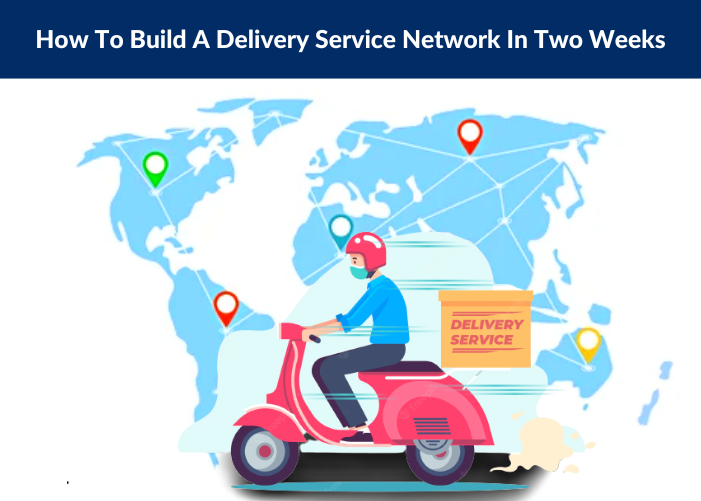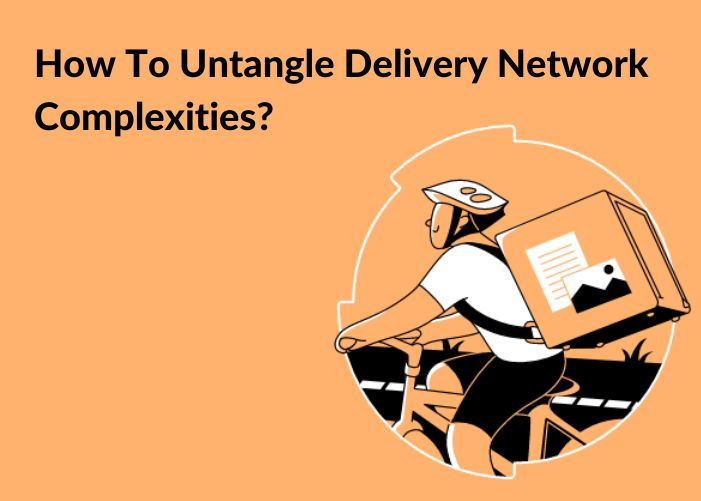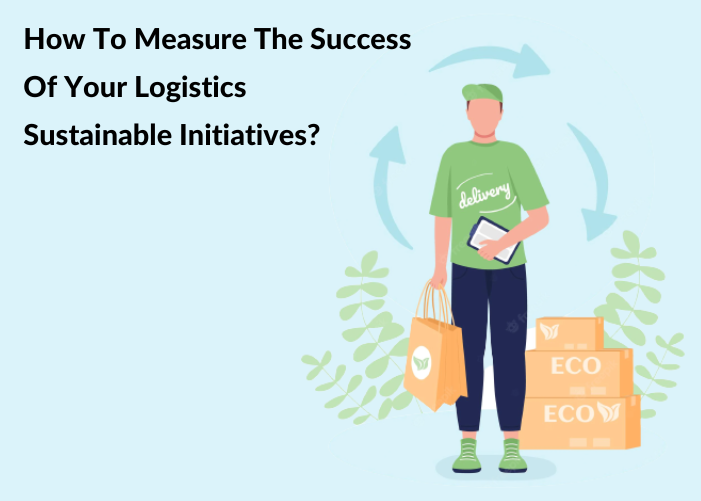1) Increasing demand for the delivery model: With more and more businesses adopting an online business model, the logistics and distribution business has never been more in demand!
People now expect parcels of all shapes and sizes to be delivered over long distances and around the world 24 hours a day, seven days a week. from goods delivered within a few miles (e.g., daily food deliveries, medicines, groceries) to goods shipped worldwide!
Delivery firms could focus on a particular type of delivery (e.g., groceries) or they could deliver all types of parcels.
2) Let us look at the starting requirements to build a delivery service network within 2 weeks:
- Business Plan: Needless to say, without a well-thought-out business plan, the chances of success are very poor! Some important points to consider:
- What are your CapEx costs to start a delivery service? Fleet vehicles, warehouses, staff salaries, MIS, insurance (important), infrastructure, and hardware are large line items when setting up a delivery network.
- Ongoing expenses: operating costs (marketing, fuel, taxes, etc.)
- Clearly define the market opportunity: your target market, your price to your customers, business profitability, the competitive landscape, and How much profit can a delivery service make?
- Register your legal entity: Creating a legal business entity safeguards you against becoming personally liable if someone sues your delivery service. Common types include partnerships, sole proprietorships, LLCs, and corporations.
- Obtain the necessary licences and permits, as well as register for taxes. Before you can start operations, be sure to register for all requisite licenses and federal and state taxes!
- Business bank account, accounting, company credit card: It is best to use separate business and personal accounts to ensure the protection of personal assets.
- Create your business. App/website, set up customer service: in today’s digital world, this is where you meet or gain customers. Make sure you select a catchy name and build an app or website with a well-designed UI and UX. Set up customer service phone lines, chat-bots, and app notifications (etc.) to service your customers.
- Define your brand: While completing the above requirements, work on your value proposition, i.e……, what does your brand stand for? Remember, this always has two aspects: the rational (functional) aspect and the emotional (intangible) aspect. The strongest brands always have a healthy mix of both.
Must-Have Food Delivery App Features
As always, everything is defined by your business model, i.e., the first question(s) you need to answer prior to selecting the features of a delivery app are your business model, your target audience, and their requirements.
Here is a typical list of questions before you begin the execution of your food delivery app:
- How will you go about partnering with restaurants?
- For drivers and delivery agents, will you use your restaurant’s drivers, an outsourced third party, or hire a courier service?
- Will you also do grocery delivery?
After a comprehensive discussion with your team, you could proceed to work on version 1.0 of the delivery app.
Most services separate out apps for customers, couriers, and restaurants. There are also ready-made frameworks that allow you to quickly create a delivery app—you could create three separate apps or just one with different interfaces.
Make sure to discuss your needs as a client thoroughly with your developers; they will be of great help! ~
3) Next, create the delivery process: After completing the setup (as mentioned above), it is imperative that you have a well-planned delivery process—this would begin from planning all the way down to execution.
Once done, you could train your team members, especially your drivers, towards a unified objective so that all effort and resources are directed toward making deliveries as quickly, efficiently, and economically as possible.
Establishing a base system also helps you to constantly check planned vs. actual performance and keep making the necessary tweaks as your business scales.
The delivery process is centered on route optimization, monitoring, and checking delivery completion.
Needless to say, the cornerstone of any delivery network is route planning. Innumerable variables (e.g., distance, terrain, traffic, travel time constraints, time taken per stop, cargo type, fleet vehicle, and driver availability) have to be balanced equally to arrive at the most optimal solution. Modern dispatch software works wonders in this regard, while also allowing flexibility for re-routing and last-minute changes.
Without efficient route planning, you will be completely lost! Customer ETAs, delivery window changes, etc. are just some areas where you will fall woefully short! And remember, route planning will only get more complex as you scale!
Delivery App: Re-Routing Feature is Key
An e-vehicle delivery company (two and three-wheelers) uses last mile delivery software to deliver groceries and medicines across a large, bustling metropolitan city. Due to the busy schedules of their consumers and unpredictable traffic snarls, the re-routing feature is key to customer satisfaction.
Their delivery agents receive an optimized route at the start of the day for their daily deliveries.
However, due to changes in line items, quantities, new delivery windows, etc., the delivery drivers constantly need to reroute in order to incorporate any last-minute changes.
The dispatch software they use allows drivers to constantly optimize their delivery route by adding new line items, changing routes, and so on. ~
4) Driver hiring and training: This is perhaps the most challenging but crucial aspect of running this business. Payroll drivers, third-party drivers, and freelance drivers—all this needs to be planned.
Don’t forget, drivers are your invaluable team members. They work long hours in god-awful conditions, form the face of your company for your customers in today’s delivery-business model, and lead the charge across your last-mile delivery operations.
Spending time on their hiring, training, compensation packages, and benefits will go a long way in defining the success—or failure—of your company.
5) Put the word out that you offer delivery: “Well, you’re now set up to begin your delivery service.” But you also need to spread the word so that your potential customers know about you.
The marketing and PR tactics that you use will be determined by elements that influence your business and its customers. Choose judiciously from a combination of the traditional (print, TV, radio, billboards, flyers) and the modern (digital promotions, social media marketing, in-app promotions) as well as personal outreach to clients.
Conclusion: As is evident, the rapid adoption of online business models has triggered a huge opportunity for the delivery business. Using all the strategies mentioned above, including new tech-led tools such as fully automated, GPS, and AI-enabled delivery software, is now critical to success.




